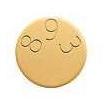 Eliquis, a new blood clot preventer sold by Pfizer Inc and Bristol-Myers Squibb Co has proven to be effective in treating the dangerous condition known as venous thromboembolism (VTE).
Eliquis, a new blood clot preventer sold by Pfizer Inc and Bristol-Myers Squibb Co has proven to be effective in treating the dangerous condition known as venous thromboembolism (VTE).
Eliquis as Treatment for VTE
About 900,000 Americans are diagnosed with VTE each year. This terminal condition consists of blood clots in the leg, also known as deep vein thrombosis, and clots in the lungs, which are known as pulmonary embolisms.
According to research done by the CDC, many of the risk factors include cancer, immobility, pregnancy, obesity, and a history of clotting disorders. Older age (60 and older), is a significant risk factor as well.
Eliquis met the goal of the study by showing it worked as well as the generic treatment Warfarin.
This new class blood thinner may replace Warfarin, which needs regular monitoring and requires patients to avoid certain foods.
Symptoms of VTE
VTE symptoms include but are not limited to:
• Swelling
• Pain and tenderness
• Change in the color of the skin
• Skin that feels warm or hot to touch
Eliquis vs. Warfarin
Patients were given Eliquis or Warfarin for six months after being diagnosed with a VTE that came on suddenly. 2.3 percent of the patients on Eliquis died or had another clot, compared with 2.7 percent on Warfarin.
In terms of safety, Eliquis was noted as the better treatment as a result of the study. Also, in the study 0.6 percent of patients on Eliquis had major bleeding compared with 1.8 percent of patients on Warfarin.
The makers of Eliquis said that it met Phase 3 product safety and a 69 percent relative risk reduction compared with the current care treatment of Warfarin therapy.
However, the study did not prove that Eliquis was superior to the current VTE treatment, but cost effective and more efficient in treating VTE.
